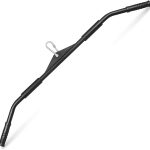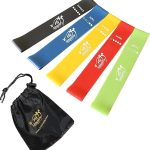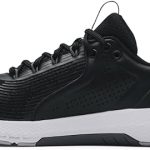Running is one of the most primal forms of human movement. For centuries, people have sprinted, jogged, and trotted for survival, sport, and joy. But it’s the shoes we wear that have significantly transformed these endeavors into a science of performance. The evolution of running shoes tells a fascinating story—a journey marked by both innovation and tradition. From rudimentary sandals made from natural materials to cutting-edge designs packed with technology, running shoes have become essential tools for athletes and casual runners alike.
Today, the importance of design and technology cannot be overstated. Modern running shoes are engineered to go beyond mere foot protection; they enhance performance, improve comfort, and help prevent injuries. With advancements like breathable fabrics, energy-return cushioning systems, and even smart sensors that track metrics in real-time, each new model promises to help you run faster and longer. But how did we get here? Join us as we explore the remarkable history behind this vital piece of athletic gear—from its humble beginnings to groundbreaking innovations thatare shaping the future of running. Get ready to lace up your sneakers tighter; this journey through time is just getting started!










The Barefoot Beginnings
The origins of running footwear can be traced back to our ancestors, who utilized simple sandals made from materials like leather, palm leaves, or woven fibers as they traversed diverse landscapes. These early creations were designed primarily for protection against rough terrain while allowing for the natural movement of the foot. For instance, the famous Huichol Indians of Mexico would fashion sandals that enabled them to run long distances across mountainous terrains, reflecting a deep connection between their cultural practices and the art of running. The focus was not just on comfort but also on adapting to diverse environmental conditions, highlighting how functional needs shaped footwear choices.
Across different cultures, running has held significant cultural importance that informed footwear design. In East Africa, where long-distance running is a revered tradition, many athletes have historically trained barefoot or with minimal cushioning shoes. This practice emphasizes developing natural biomechanics—strengthening foot muscles and improving stride efficiency without artificial props. Herein lies a fascinating interplay: while modern sports science may promote technical shoes filled with features like arch support and heel cushioning, it’s critical to recognize that some of the most successful runners have achieved outstanding results through minimalist approaches reflective of their heritage.
As interest in barefoot running surged in recent years—sparked by books like “Born to Run” by Christopher McDougall—many runners began to reevaluate traditional opinions about footwear. They discovered that returning to more natural forms of running could help mitigate injuries often associated with heavily cushioned shoes. The concept encourages better form and suggests that less interference from high-tech designs may allow for stronger feet and legs over time—a compelling narrative juxtaposing ancient practices with modern athleticism. This revival illustrates not only a deeper understanding of human physiology but also an appreciation for how historical contexts continue to shape contemporary training techniques and philosophies in the sport today.
The Rise of Athletic Footwear
As the 20th century dawned, so too did a revolution in athletic footwear that fundamentally transformed how runners approached their sport. Dedicated running shoes began to emerge, with notable brands like Adidas and Nike paving the way for innovation. Around this time, athletes started to recognize that their choice of footwear could significantly impact performance and comfort during long runs or sprints. This realization spurred a rapid evolution in shoe design tailored specifically for running enthusiasts.
One of the key milestones in this journey was the introduction of cushioned soles. Prior to this advancement, runners relied heavily on minimalistic shoes or even basic sneakers without any supportive features. The advent of cushioned soles allowed for better shock absorption, which protected athletes from joint stress and injuries associated with high-impact activities. Similarly, arch support was integrated into designs, addressing various foot shapes and providing essential stability. This evolution not only enhanced comfort but also enabled longer training sessions as athletes could run harder and longer without succumbing to fatigue or discomfort.
Mass production played an equally pivotal role in making these innovations accessible to a wider audience. The ability to manufacture shoes at scale meant that quality athletic footwear could be sold at more affordable prices than ever before, opening doors for both amateur runners and serious competitors alike. Think about it: prior to these advancements, many individuals faced limitations imposed by geographical or economic factors when it came to accessing proper running gear. The introduction of assembly line techniques changed all that—athletes now had access to reliable footwear without breaking the bank, fostering a burgeoning culture around running that encouraged greater participation.
With each leap forward in design and accessibility, running became more than just a sport; it evolved into an inclusive community where people from various backgrounds could embrace fitness as a lifestyle—thanks in no small part to their trusty partners on the road: innovative athletic shoes designed just for them!
Technological Innovations in Running Shoes
The evolution of running shoes has taken a monumental leap forward with remarkable technological innovations that cater to the ever-growing needs of runners. One of the standout advancements is the use of lightweight materials that have revolutionized the way athletes experience their runs. Modern designs utilize advanced fabrics such as mesh and engineered knits, which not only enhance breathability but also provide an almost sock-like fit. For example, Nike’s Flyknit technology wraps around the foot without unnecessary weight, allowing for greater agility and comfort. This focus on featherlight construction means that runners can log more miles without the feeling of burden, while also keeping feet cool and well-ventilated.
Integrating cushioning systems has become another hallmark of contemporary running shoes, transforming how impact forces are absorbed during training or competition. Companies like ASICS and Brooks have led the charge with their proprietary gel and DNA loft technologies respectively, which provide excellent shock absorption properties tailored to individual foot strikes. These advancements serve to minimize stress on joints, enhancing performance while simultaneously reducing injury risks. The sensation of “running on clouds” isn’t just a marketing slogan; it’s a promise delivered through extensive research into material science aimed at creating more forgiving surfaces where runners can tread confidently.
In addition to comfort and cushioning, stability features are paramount in preventing injuries associated with improper foot alignment and overpronation. Brands like Saucony and New Balance have integrated unique stability technologies such as medial posts and heel counters designed specifically for those who require extra support during their strides. For instance, Saucony’s ISOFIT system adapts to various foot shapes for individualized support throughout every step, reinforcing confidence on uneven terrains or longer distances. As these innovations continue to intersect with increasing knowledge about human biomechanics, running shoes have evolved into highly specialized tools that elevate both performance and safety for all levels of runners.
Ultimately, as technology continues to advance at an accelerated pace within athletic footwear design, the relationship between runner and shoe will only deepen—shaping a new era where optimal performance is accompanied by unprecedented comfort and injury prevention strategies tailored precisely to meet each runner’s unique needs. It’s not merely about running faster; it’s about running smarter—and today’s innovations embody this ethos brilliantly.
Smart Technology in Modern Running Shoes
With the rapid advancements in technology, it’s no surprise that modern running shoes are now equipped with smart capabilities designed to take performance tracking to the next level. Today’s runners can step into their shoes and gain insights previously only imagined in sci-fi films. The integration of sensors into footwear allows athletes to monitor vital metrics such as pace, distance, cadence, and even footstrike patterns—all without needing additional gadgets. This real-time feedback system empowers runners to make immediate adjustments during their training sessions, leading to improved efficiency and reduced risk of injury.
The data collected from smart shoes not only aids individual performance but also enhances overall training regimes. By analyzing metrics over time, athletes can identify trends and patterns that may indicate fatigue or potential injuries before they occur. For example, a runner using the Hoka One One’s carbon-plated models with integrated technology might discover changes in their running form that could lead to strain on specific muscle groups. Armed with this information, adjustments can be made swiftly—either in technique or by consulting a coach—allowing the athlete to optimize their training schedule for peak performance.
Several brands have taken significant strides in incorporating tech into their designs. Nike’s Smart Shoe line features built-in sensors within their React Infinity Run model, which actively track how a runner interacts with the ground and collect data on every stride. Meanwhile, Under Armour’s HOVR series connects wirelessly via Bluetooth to an app that provides post-run analytics while allowing users to set training goals and receive personalized workout recommendations based on previous runs. These examples illustrate not just how far we’ve come since simple sneakers but also signify an exciting future where technology plays a pivotal role in athletic development.
As we move forward into an era where data-driven decisions are becoming commonplace in sports and fitness culture, the smart shoe concept will likely evolve further. Embracing artificial intelligence could enable these devices to adapt dynamically during workouts—for instance, automatically altering cushioning levels based on terrain or fatigue levels detected through gait analysis. As more runners embrace these innovations, expectations for performance-enhancement will certainly rise alongside our ability to tap into the wealth of information provided by our very footsteps.
The Role of Biomechanics in Shoe Design
The intricate relationship between biomechanics and running shoe design is a testament to how science enhances athletic performance. Biomechanics, the study of body movement and mechanics, informs manufacturers about how the foot interacts with various surfaces during running. By examining things like gait patterns and foot strike dynamics, designers can create shoes that support natural movements while enhancing efficiency. For example, certain shoes are engineered to accommodate overpronators—runners whose feet roll inward excessively—with specialized stability features that guide the foot into a safer stride. This attention to biomechanical detail not only optimizes energy expenditure but also minimizes injury risk.
Personalized fitting has emerged as another key element in maximizing performance through biomechanics. The ideal running shoe is not a one-size-fits-all solution; rather, it must cater to individual nuances such as arch height, weight distribution, and running style. Custom fitting technologies have made great strides in recent years, allowing consumers access to 3D foot scanning and analysis tools in specialty stores. Some brands even offer personalized insoles based on this data—tailoring cushioning and arch support for specific athletes’ needs. A well-fit shoe enhances comfort significantly, which translates into better performance over time.
Case studies illustrate these advancements beautifully. Consider the collaboration between Nike and renowned sports scientists who analyzed thousands of runners’ gaits to refine their popular models like the ZoomX Vaporfly NEXT%. The insights gathered from this extensive research enabled them to engineer lightweight foam technology coupled with carbon fiber plates designed to promote forward propulsion while conserving energy—a breakthrough not merely based on aesthetics but grounded in rigorous scientific investigation. Such developments spotlight how integrating biomechanics into shoe design propels innovations that directly affect runners’ competitive edge.
In today’s high-performance landscape, understanding the role of biomechanics isn’t just an academic pursuit; it’s vital for everyone from weekend joggers to elite athletes. As we continue unlocking new levels of understanding regarding human movement mechanics combined with advanced engineering practices, we pave the way for future breakthroughs that promise even greater enhancements in running performance—and ultimately redefine what we perceive as achievable by our bodies on the track or trail.
Environmental Considerations in Running Shoe Production
As the demand for environmentally responsible products rises, running shoe manufacturers are taking significant strides toward sustainability. Traditional footwear production often involves harmful chemicals and processes that contribute to environmental degradation. However, leading brands are now prioritizing eco-friendly materials such as recycled plastics and organic cotton, which help reduce reliance on non-renewable resources and minimize ecological footprints. For example, Adidas has made impressive strides with its Parley line of shoes, constructed using recycled ocean plastic, demonstrating that innovation can go hand in hand with environmental stewardship.
Consumer choices play a pivotal role in shaping industry practices. As runners become more aware of their purchasing power, they increasingly seek out brands committed to sustainable practices. This shift in mindset is not just about choosing a shoe based on color or comfort anymore; it’s about aligning purchases with personal values regarding the planet’s health. Brands that transparently share their sustainability initiatives—such as using water-based adhesives instead of toxic solvents or switching to biodegradable packaging—are likely to attract conscientious consumers who wish to make informed decisions.
Among those leading the charge toward greener practices are companies like Allbirds, which emphasize comfort without compromising on sustainability. Their signature shoes incorporate merino wool and sugarcane-based foam, showcasing how innovative thinking can yield pleasant yet eco-friendly performance wearable products. Additionally, Nike’s Move to Zero initiative aims for zero carbon waste by rethinking the very nature of manufacturing: utilizing scrap materials from the cutting room floor to create new products while implementing energy-efficient methods throughout factories.
In this rapidly evolving landscape, it’s clear that the running shoe industry is at a crossroads where technology meets responsibility. The collaboration between innovative design and environmental consciousness not only enhances product offerings but also builds a stronger community among consumers who care deeply about sustainability. As we look forward to future trends in footwear creation, commitment to these eco-friendly initiatives will be essential for any brand looking to remain relevant and responsible in an ever-evolving market focused on both performance and preservation of our planet.
Future Trends in Running Shoe Design
As we look to the future of running shoe design, the possibilities seem as boundless as a runner’s determination. Innovations based on current technological trends promise to elevate performance, comfort, and sustainability to unprecedented heights. One of the most exciting areas is the integration of artificial intelligence (AI) and machine learning into personalized shoe design. Imagine stepping onto a smart fitting platform that not only measures your foot size but also analyzes your gait and running style, suggesting the perfect shoe tailored just for you each time! This technology could dramatically reduce injury risk while maximizing performance by providing runners with footwear specifically engineered for their unique biomechanics.
Additionally, partnerships between brands, elite athletes, and scientific researchers are poised to lead revolutionary advancements in shoe development. For instance, companies like Nike have been known to collaborate closely with professional runners during the design phase of new models — taking insights from athletes’ real-world experiences and incorporating them into construction techniques or material applications. This synergy can translate into specialized footwear that addresses particular challenges runners face in different environments or terrain types while enhancing overall efficiency.
Moreover, we might witness a surge in eco-conscious innovations as manufacturers increasingly adopt sustainable practices alongside high-tech advancements. Companies like Allbirds are already experimenting with materials derived from nature without compromising performance metrics; this trend will likely gain momentum as consumer demand rises for shoes that do not contribute negatively to our planet. Innovations using biodegradable materials or recycled components may become commonplace within the industry while still maintaining cutting-edge functionality.
In essence, the blending of AI-driven personalization with collaborative designs fueled by athlete feedback will catalyze transformative changes in how cycling enthusiasts experience footwear. As research continues uncovering insights about foot mechanics and environmental impacts evolve with product development, we can expect tomorrow’s running shoes to be smarter than ever before — designed not just to withstand distance but to intuitively connect with their wearer’s needs on every stride!
Runners’ Perspectives: What Matters Most?
When it comes to running shoes, no one knows better than the runners themselves. Their insights illuminate a spectrum of preferences and priorities that greatly influence the market. For many, comfort is paramount; it’s common for runners to emphasize that a well-cushioned shoe can make or break their experience on both the road and the trail. As Sarah, a marathon runner from Denver, puts it: “If my shoes don’t feel like an extension of my feet, I won’t trust them to carry me through long distances.” This sentiment reflects a broader consensus among enthusiasts who prioritize not just padding but also how the shoe interacts with their gait.
Fit follows closely behind comfort in terms of importance. Runners often look for shoes that hug their feet without unnecessary tightness or loosening up during runs. The recent shift towards more customized shoe fittings—often facilitated by advanced scanning technology—illustrates how brands are responding to these needs. Tom, an avid trail runner, shares his experience utilizing such digital fitting services: “It took running to another level for me. Having shoes tailored to fit my foot shape sacrificed nothing in performance while also preventing blisters.” This personalized approach reveals how attention to foot biomechanics and anatomy can positively impact runners’ experiences.
Style has also emerged as a pivotal factor in today’s marketplace. While functionality remains key, aesthetic design increasingly influences purchasing decisions. Many runners appreciate when brands fuse vibrant colors and futuristic designs with great performance capabilities—a trend seen prominently at expos showcasing new releases. Ella, a social media influencer and casual runner, mentions, “I love sharing my runs online; wearing stylish shoes adds credibility and excitement.” In this way, personal expression intertwines with athletic necessity as consumers opt for footwear that matches their personality while optimizing performance.
Finally, trends will undoubtedly continue to evolve based on feedback directly from those pounding the pavement day in and day out. As companies tap into public discussions on platforms like Runner’s World forums or Strava groups, they gain valuable insights into collective preferences. Brands are harnessing data-driven approaches not only for developing future technology but also shaping styles that resonate with brand loyalty among passionate runners everywhere. This cyclical dialogue between manufacturers and athletes underscores an exciting time in which innovation is propelled by real-world experiences—a true testament to the symbiotic relationship within this dynamic community.
Embracing the Future of Running
The evolution of running shoes is nothing short of remarkable. From simple beginnings with basic footwear to today’s high-tech solutions, each step has brought incredible advancements. We’ve witnessed the transformation of design and function, thanks to innovations that enhance performance and protect athletes. Today’s shoes are lighter, smarter, and tailored to meet the needs of all runners.
As we look ahead, it’s clear that this journey is far from over. The ongoing evolution in shoe design will continue to adapt to new insights about biomechanics, technology, and sustainability. As brands collaborate with researchers and athletes alike, we can expect even more exciting developments on the horizon. Embrace this progress; your next run may just benefit from the innovations waiting around the corner!
















